As soon as we come across the word ‘Rajasthan’, the beautiful images of vast sandy landscape flatter our minds. Does the idea of running in a desert fascinate you? Do you want to experience the excitement and thrill of the desert in Jaipur? Kishan Bagh park in Jaipur is the place that will satisfy your wandering soul. Kishan Bagh is the only desert park that most adventure lovers are not aware of. The desert park is a profusion of thrills, excitement and the untapped treasures of rural magic.
About Kishan Bagh Sand Dunes
Kishan Bagh is one of the vast open spaces that spreads over 30 acres and falls within the city limits. It is a very first desert park in Jaipur built at the foot of the Nahargarh Fort. The restored landscape of Kishan Bagh idealizes the ecology of the desert. This ecological park radiates a glow over Rajasthan’s beautiful natural heritage with beautiful chromatic desert dunes surrounded by crystal clear water bodies and diverse plantations. It is a perfect escape for those who want peace and fresh air away from the hustle and bustle of the city.
Kishan Bagh Then Until Now – Story Until Now
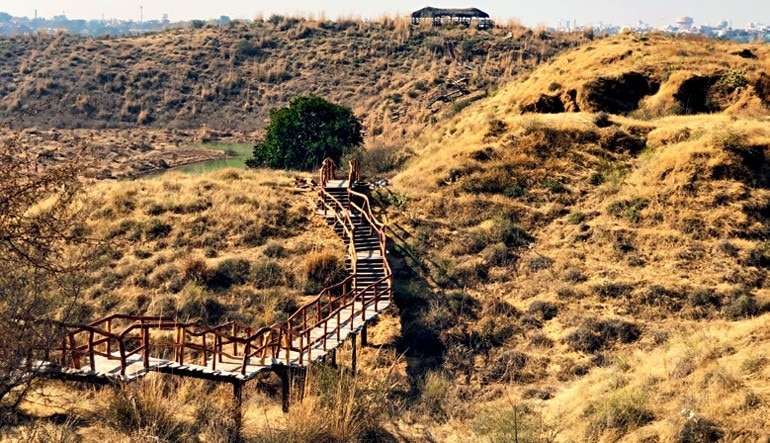
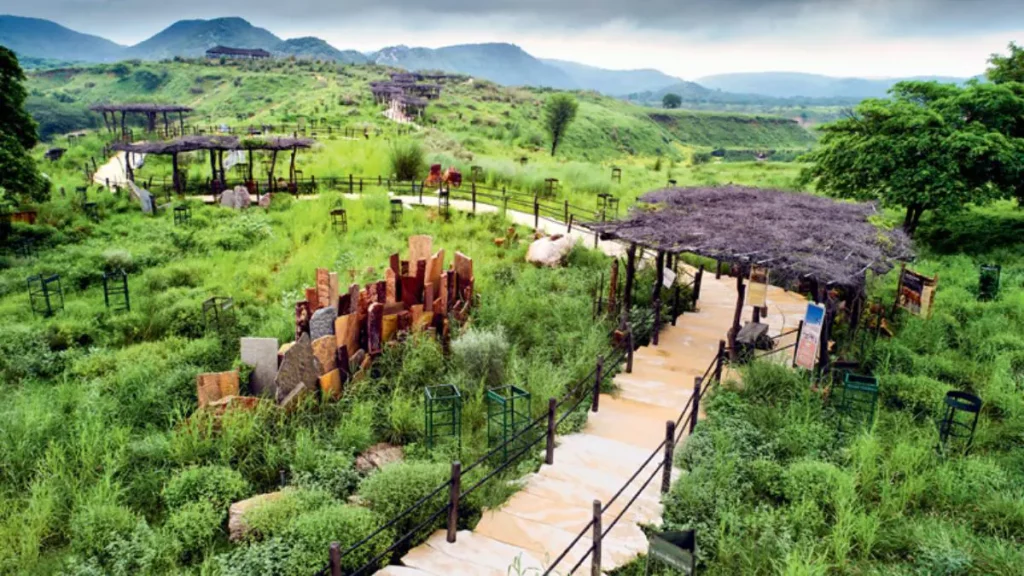
From a vast desolate dry land to a full of life ecological park and nature lovers delight, the park has undergone an interesting transformation.
The Unheard Story – Kishan Bagh is the natural landscape around a palace built by Prince Jagat Singh, son of Mirza Man Singh of Amer. Prince Jagat Singh married Mariam, a foreigner and built her a palace and named it Mariam Mahal. She lived in this palace built in a picturesque area. This area near the palace is known as the Kishan Bagh.
The decline of the landscape – Sandy areas were easy to see at the foot of Galta Hills and Nahargarh Fort Hills in the past. Over the years, as this city grew and expanded, the area became like a neglected caravan of sand dunes in Jaipur, overgrazed and strewn with shards of broken beer bottles. The structures of the land and the water flows changed. The area was soon hemmed in on either side by densely built bastis, distinctly different from the vast, wind-swept landscape of swaying grasses and shrubs.
The Failed Attempt – The winds from the Thar Desert in the far west pile up against the Nahargarh Hills to create the existing dunes. This gave JDA the idea to restore this landscape. JDA had already worked here to create a cactus garden, but they didn’t survive and their project was unsuccessful and turned out to be a disaster.
How the idea became reality – In January 2016, Jaipur Development Authority (JDA) Pradip Krishen, an environmentalist, showed this vast arid land and asked his opinion on turning it into a public park. After working at the difficult site of Rao Jodha Rock Park in Jodhpur, Pradip Krishen was given the responsibility of restoring the Kishan Bagh dunes to a natural desert landscape.
The names behind the success – In addition to the ecological restoration by Pradip Krishen, the architect Golak Khandual has also made commendable efforts. He filled life in creation with local materials and shapes. With their tremendous efforts along with JDA, this vast expanse of untapped land has been beautifully restored and made Kishan Bagh worth a visit.
Now the desert park has become a popular tourist destination and locals and tourists alike flock to the area to get a glimpse of the harmonious relationship between the city and the countryside.
Making the efforts of Kishan Bagh and Pradip Krishen
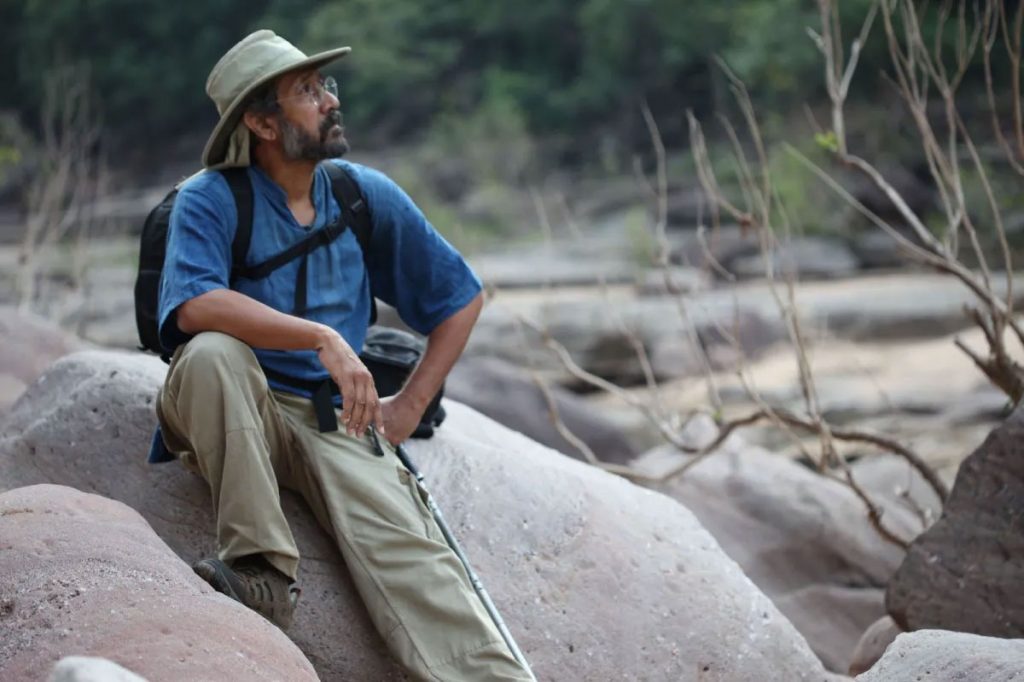
Jaipur is a semi-arid region and the wind-blown sand from the desert piled up against the Nahargarh hills to create these dunes near Kishan Bagh. When Pradip Krishen saw a barren stretch of ‘marooned dunes’ in northeast Jaipur at the foot of the Nahargarh Hills, sand dunes were enclosed, which almost resembled the landscape in the Thar Desert and canyons carved by wind and water. were formed and which resembled Chambal ravines.
After working on the Rao Jodha Desert Rock Park on 70 acres of a rocky hillside, he was excited by the prospect of trying to recreate a very different desert landscape. He wanted to bring the aspects of Roee (indigenous scrub or the traditional jungle from the Thar desert) to life here. He wanted to preserve its habitat as a natural desert landscape and also preserve the canyons and prevent further damage.
The revival attempt proved to be a challenge both geographically and administratively. Pradip got off to a thrilling start, and its four years of arduous restoration efforts made it a haven for wildlife and a delight for nature lovers. More than 100 species of trees, shrubs, seeds and soils were used to recreate this park. Most of the material was sourced from Western Rajasthan, which represents the desert’s diverse micro-habitats.
An insight into the ecology of the Kishan Bagh
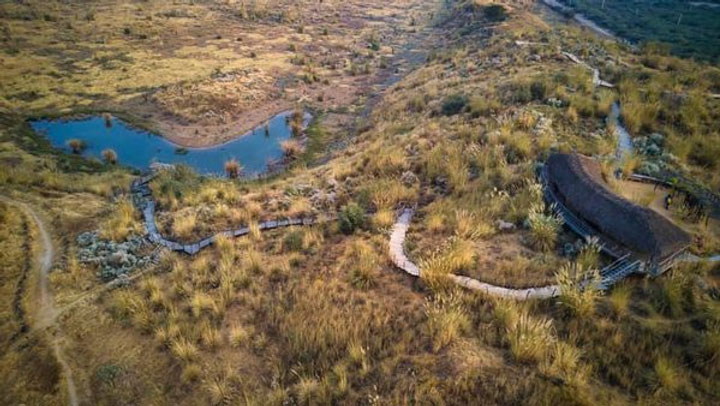
The city of Jaipur is on the edge of two rich ecological zones but has turned its back on them so far. Kishan Bagh gives the chance to appreciate these beautiful but fast disappearing habitats. This carefully and cunningly landscaped park tells the story of sand and its myriad shapes.
Flora – The park mainly showcases the Roee habitat which consists of Seenio, Bui and Kheemp. Aside from the Roee landscape, there is more to the flora of Western Rajasthan. There are trees like Khejri, Rohida, Kumatiyo, Akada, Dhatura to name a few. You will also see Dhok trees and Sarkanda or Munj grass in their natural glory.
Fauna– Speaking of the fauna, the ecology of Kishan Bagh supports many birds, insects and animals. Some of them are Gray Francolin (Teetar), Indian Roller, Myna, Indian Robin, Bee Eater, Peacock, Desert Fox, Nilgai to name a few.
rocks – Among the numerous micro-habitats of desert land recreated in Kishan Bagh, one can see a variety of rocks including fossil rocks, sandstone, granite, stromatolites, quartzite and rhyolite.
Each of the habitats is explained with interpretive signs next to them, made on a shaggy tree trunk.
Key Highlights of Kishan Bagh Park
Here are some of the highlights of the park that very well explain the desert’s diverse habitats.

Roee Habitat
Roee landscape (the desert landscape of western Rajasthan called Roee) predominates the habitat of this park. This habitat traces the ideal conditions for the growth of various shrubs and plants. To recreate the landscape, the top layer of soil from western Rajasthan was reclaimed. It is dominated by small shrubs such as Seenio, Bui and Kheemp. The park extends a natural landscape with the local Seenio, Bui and Kheemp. Seenio is the preferred food of chinkara deer, which turns dry and green in summer as the moisture returns to the air. These are the same as the monsoon forests of the Aravali hills. Bui has a white, cottony growth, and Kheemp shrubs grow in and around the sand dunes and are up to 7 to 10 feet in height. There are also many other microhabitats.
Dhok Habitat
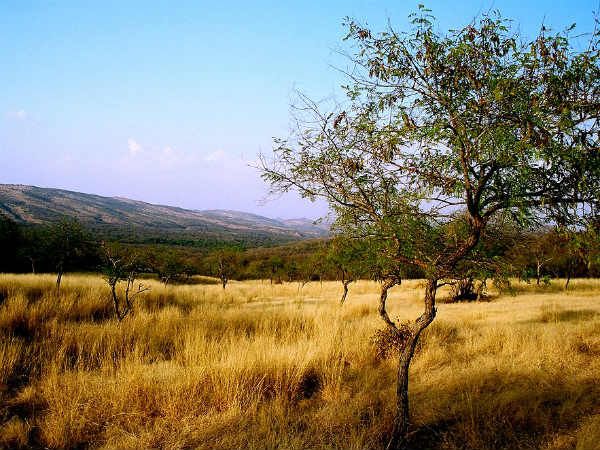
Dhok trees are found in abundance on the hills of Nahargarh Fort. These tough trees are among the trees that survive in the harsh conditions of the Aravali hills. They adapt well to the vertical slopes and the lack of water.
Granite Habitat
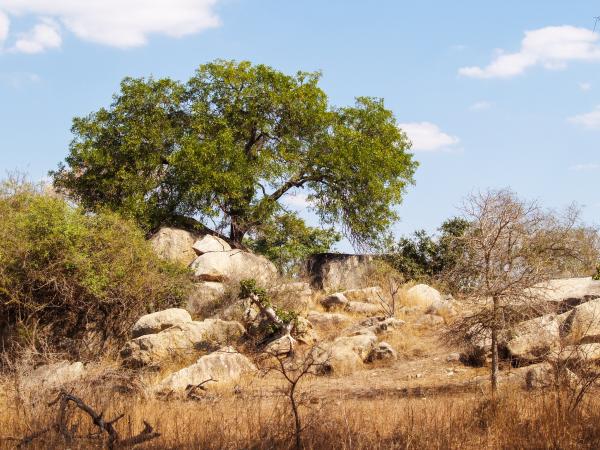
The granite is the most prominent landscape of the Aravali hills. Many plants such as Chasmophytes grow in holes of these millions of years old rocks. These are strong plants that are known to develop with few resources such as full opening and very limited soil.
Desert Rocks
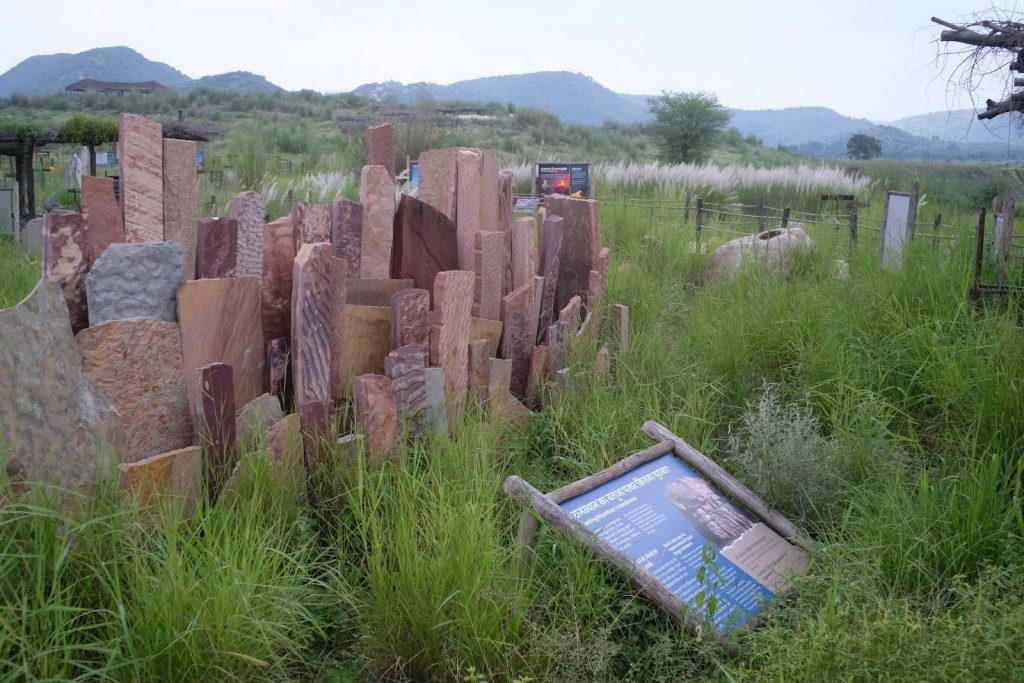
This habitat is scattered along the beginning of the trail that takes visitors to the far end of the Kishan Bagh ecopark. This wide walkway includes a variety of rocks from the Aravali hills. Out of these sandstones are one of the most dominant stones. Other notable stones are quartzite and rhyolite. Quartz is mostly found in the rocks of the Aravali Hills near Jaipur. One of the least known rocks from Rajasthan is Stromatolites, a fossiliferous rock.
viewing platform
The viewing platform of this ecological park gives a picturesque view of the entire area, including the western cliffs of Nahargarh Hills. An elongated boardwalk made of Jaisalmer stone winds through the park like a spine, leading to the viewing platform or Machaan. This deck seems to be an amalgamation of the rural huts of Rajasthan. There is another lookout point called Maidan lookout.
desert oasis
There is also a small pond next to the deck. It was a naturally occurring body of water, but has been transformed to look like a desert oasis.
From the dry stone walls at the gate to the thatched roofs with Kheemp, you will witness the simple elegance of local materials and shapes in every corner of the park.
Things That Make Kishan Bagh Dunes Unique
From the entrance, the appearance of the Kishan Bagh is impressive. Every centimeter of the recreation enriches the experience of the landscape.

Natural elements – The park leaves you wondering how pristine barren sand dunes can be transformed into such a masterpiece worth appreciating. The park has been transformed using local and natural materials and resources from Rajasthan.
Local habitat – The only thing that sets it apart from any other park in Jaipur is its local habitat. Most parks have decorative trees and plants that are imported and not native ones. Native trees support the local wildlife and are best suited to local climatic conditions. The imported tree varieties have devastated the local ecology as they provide no discernible benefit and predominate as a disruptive species. On the other hand, Kishan Bagh praises the gift of nature – it is rejuvenated using the local ecology, keeping its original form, unlike the parks that completely change the geography with landscaping.
First of its kind – Kishan Bagh is the first of its kind in both the city and the state. It will serve all kinds of things, a place to catch your breath and a peaceful walk, a lure for birdwatchers and thriving nature lovers, a lesson in local ecology and geology, a reflection on the connection between city and countryside.
Visiting Kishan Bagh is like reconnecting with nature and taking time to relax. We’re sure this desert-like spread will definitely make you long for a second visit.
Kishan bagh park ticket price
Ticket price: fl. 50 for adults
students: Free
The entrance fees to Kishan Bagh are Rs 50 per person. Admission is free for students and children. Students can enter the park for free with a letter of recommendation from the Head of Education Institute. Children under the age of 8 can enter the park with their family for free.
Kishan Bagh, Jaipur times
Winter is the time to visit Kishan Bagh Park
November to March 8.00 am to 5.30 pm
In summer it can be visited from
April to October 06:00 am to 6:30 pm
Location of Kishan Bagh Park in Jaipur
Naya Khera, Vidhyadhar Nagar, NH-8, Jaipur
How to reach Kishan Bagh, Jaipur
It is just 15 km away from Jaipur and is easy to reach. There are various means of transportation available that will take you to the Kishan Bagh Sand Dunes Jaipur.


